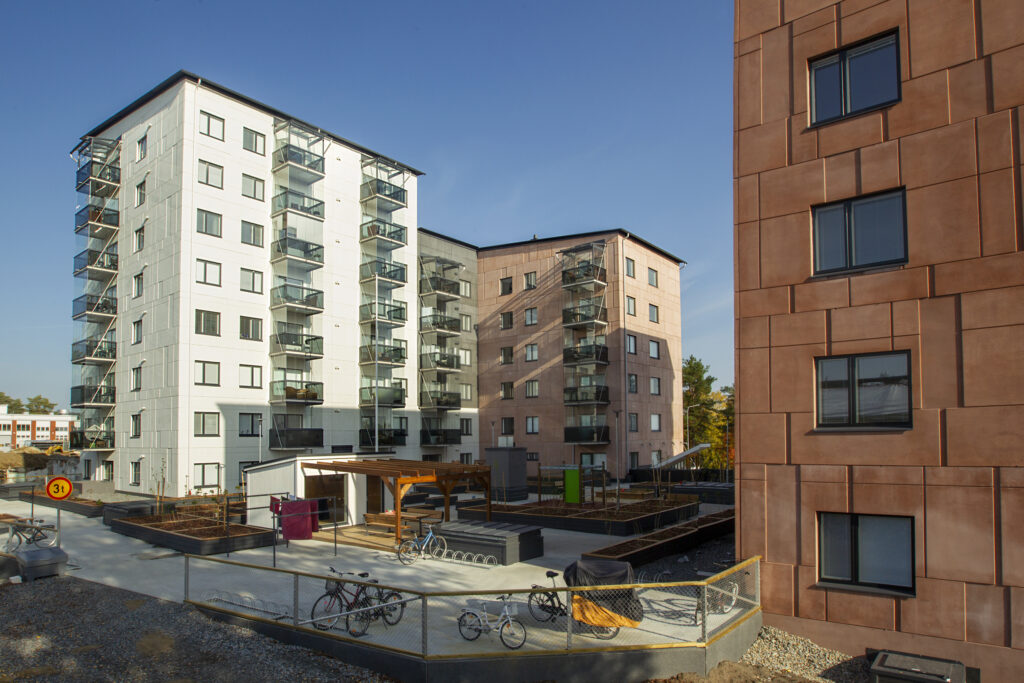Housing health

People spend a lot of time in their homes, which is why the indoor conditions of homes play a major role in people’s health and well-being.
If you suspect that some condition in your home is causing a health hazard, tell a representative of the housing company or the property owner about it and give your justifications. If you have a rented flat in a housing company, also tell the shareholder. The property owner is primarily responsible for the condition of the structures and building technology of dwellings and, consequently, also for health-related conditions in a dwelling. This means that it is up to the owner to investigate the matter. If, in the property owner’s view, there are no indications of a condition causing a health hazard in the dwelling, or the property owner does not start investigating or remedying the defects, the resident or shareholder has the right to have the matter investigated by the environmental health services.
“If you suspect that the conditions in your home are harmful for your health and you do not know what to do, you can ask an Environmental Health Inspector for advice.”
-
-
- A musty smell, such as in an earth cellar, bubbling of structures, detachment of coatings, or colour changes in structures indicate moisture and mould damage in a building.
- Moisture and mould damage can occur in all buildings.
- The property owner has the primary responsibility to ensure that the condition of the dwelling’s structures does not cause health hazards.
-
-
-
- The purpose of ventilation is to remove contaminants and humidity from the indoor air of the dwelling while supplying clean replacement air.
- Ventilation must be used and maintained following the system’s instructions for use.
-
-
-
- Chemical impurities mainly originate from construction and interior decoration materials, moisture-damaged structures, human and domestic activities, or from outside the dwelling (radon).
- No general instructions can be issued for investigating and eliminating the health hazards caused by chemical pollutants and each case must be dealt with separately, as indicated by the nature and scale of the hazard.
-
-
-
- The temperature conditions of a flat have a significant impact on living comfort.
- The indoor temperature of a dwelling must be between 18° C and 26° C during the heating season and between 18° C and 32° C at other times.
- The temperature of indoor air must not be too high or too low.
- Indoor air must not be too dry or humid (risk of moisture damage).
- Air flows must not be too strong (harms caused by draft).
-
-
-
- Radon is an invisible and odourless gas formed as a degradation product of uranium in the soil. It can enter residential spaces, for example through imperfectly sealed structures.
- In Kuopio, radon concentrations in indoor air of detached houses have been below the national average.
- For more information, visit the Finnish Radiation and Nuclear Safety Authority’s website at https://www.stuk.fi/
-
-
Your neighbour’s ideas about tidiness may be different from what you are used to. However, continuous neglect of cleaning the dwelling may cause odours, or a messy flat may attract insects, which may then also spread to the neighbours’ homes and cause a nuisance. People living in filthy homes are often in need of help. If you feel that you cannot help, the situation does not improve, or you only need advice, you can contact the Environmental Health Inspectors responsible for housing health issues. If necessary, you can also submit a notification expressing your concern for your neighbour as referred to in the Social Welfare Act, or for their pets as referred to in the Animal Welfare Act.
Housing health
Heikki Kallunki
Environmental Health Inspector
Environmental Health Services
Public premises
Santtu Laitinen
Environmental Health Inspector
Environmental Health Services
Health requirements for dwellings – National Supervisory Authority for Welfare and Health Valvira (in Finnish)